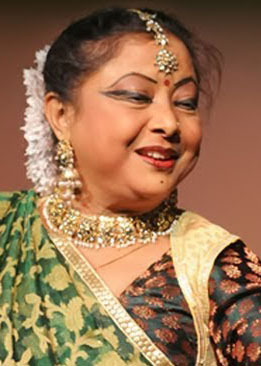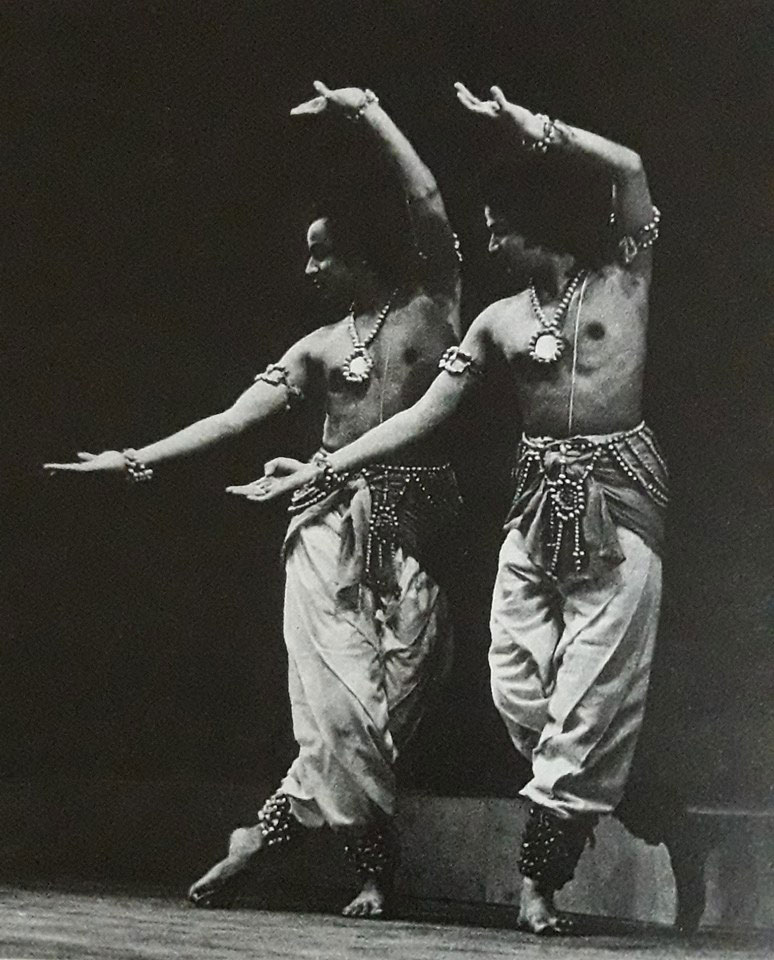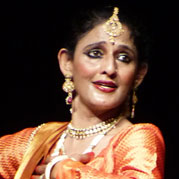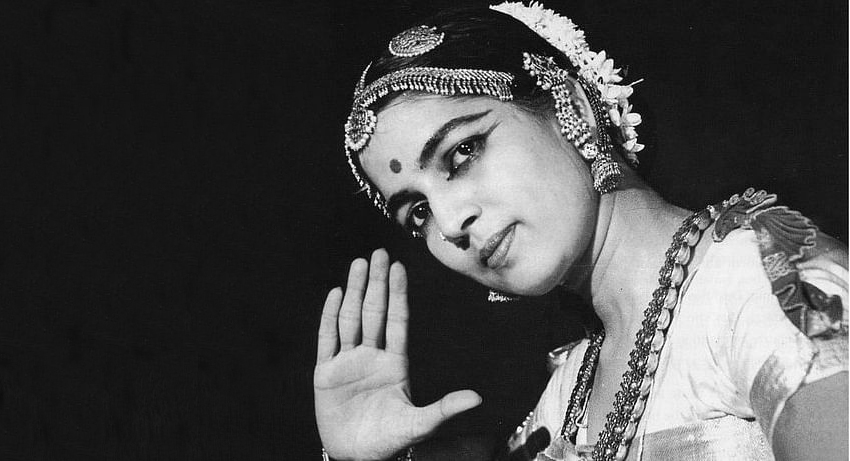Kathak exponent and master, Pt. Vijay Shankar passed away a week ago. Despite the fact, that he received several awards including the highest award from the Sangeet Natak Akademi (National Academy of Performing Arts in India) his work was not very well known to professionals associated with Kathak outside the communities and places he worked and lived. Personally, he nurtured the talent of a very large number of Kathak dancers and musicians both in India and several countries abroad.

The growth of the mind and the body and it’s the manifestation through the language of dance on stage makes the terrain of Dance see a generational change every five years. The fast pace of the world of Indian Classical dance hence illustrates a short term memory to recall the contribution or the work of large number of artists. This obituary on Pt. Vijay Shankar hopes to inspire other dancers and dance professionals to learn from the body of his work especially the manner in which Kathak Dance became a successful example of bilateral relations between India and Japan.
Kathak & India-Japan Cultural Diplomacy
The recent echoes that the 21st century is Asia’s century is not merely about economics and military power it is also about soft power represented among others in the performing arts. Soft power is about human to human contact which sustains deep-rooted realistic connections between communities across political boundaries. Unfortunately, cultural diplomacy is most times limited and defined by one-time event creations, such as the creation of Festivals – Exhibition modules or one-time artist exchange programs. Within this reference, the work of Pandit Vijay Shanker stands as a meritorious illustration which created a sustainable cultural diplomatic statement between India and Japan through Kathak dance. The establishment of the Yakshini Kathak Centre in Tokyo by his prime student Yakko Yazawa who learned from him in India became a ground for him to spend considerable time in Japan and develop the cultural geographical understanding of Kathak in the minds of large numbers of committed Japanese Students.

“If there was a holistic student of Pandit Birju Maharaj ji, it was Vijay Bhai. Although Maharaj ji, and I have been working with Japanese both in India and in Japan we have always recognized that the ground was laid by Vijay Bhai. An example is Masako Sato who learned from Birju Maharaj ji for nearly a decade and now is running the inventive and successful Miyabi Kathak Dance Academy in Japan. It was Vijay ji who is responsible for not only introducing Kathak in Japan but creating sustainability for the art form in Japan,” says Kathak Exponent and Guru Behen (sister through a lineage of knowledge from the same guru) Saswati Sen.
The Art of Pt. Vijay Shankar
Born in Hyderabad, Vijay Shankar received his initial training in Kathak dance under Ramkrishna Shukla and was later groomed in the art by Pandit Birju Maharaj at Kathak Kendra, New Delhi. He also trained in the Tabla as a student of Khalifa Ghulam Hussain Khan.

Pandit Birju Maharaji ji said “Yes, he sang for me and he was a great percussionist. He played both Tabla and Pakhawaj; but most of all he submerged himself in the landscape of my aesthetics, he understood my technique of rhythm and movements laced with poetic imagination. Vijay was ethical to the knowledge which I taught him. He represents the true example in the way a disciple first learns, then meditates and then translates the science of that knowledge with his innovations but impeccably adheres to the principals of the teachings of his Guru.” Most leading Kathak dancers from Kolkata especially from the Institute of Padatik too have been taught by him.
My question to Birju Maharaj ji was about the technique Shanker adopted to transplant the language of Kathak dance on the Japanese body. To which his reply was, “Anyone’s body is like a blank paper. It does not matter what physical shape it is. The Guru meditates deeply since each human body is different and hence the guru is required to comprehend what is the nature of the aesthetics of his dance language that will be appropriate on that body. Someone is short, like my student Bharti Gupta, who then skillfully cultivated stretches in an innovative manner that made her dominate space with the power of her graceful and yet sharp stage presence. In my view, Vijay understood my technique. I marvelled and remain thrilled in the manner he was able to cultivate Kathak in the mental and physical body of so many Japanese.” Pt. Birju Maharaj’s response echoes a seminal method followed by craftsmen in South Asia such as traditional sculptors and even boat makers. For example, Sudarshan Sahu an award-winning sculptor from Odisha said, “I take a stone, I meditate. The stone, in turn, speaks to me. In my meditation, a form rises and then reciting verses from sculptural treatises I begin to carve the stone.” Loharu Isha Sidhik Thaim engaged in the 400 craft of boat making in Mandavi, Kutch says, “we look at a large number of wooden planks lying around. Ones that will be the central spine of the boats that will sail the Indian Ocean. Then I meditate, and one of the wooden planks begins to speak to me, and then I pick up the plank worship it and begin the ritual of boat making.” It is the same according to Pt. Birju Maharaj when you are given to teach students with different bodies. Vijay Shankar mastered the technique.
[adrotate group=”9″]

Vijay Shankar often as a student sang for his legendary Guru. Of them, the song of Uddhav in his production on Krishna is one which his contemporaries remember. Uddhav was sent as a messenger by the divine Krishna to the Gopis or the women friends of Krishna living in his beloved Vrindavan. However, Uddhav pledged to communicate his own philosophy of the power of ‘formlessness’ (Nirguna Brahamans) to the Gopis. The Krishna Gaatha (Indian concept of Myth) like others assumes metaphorical meanings. Uddhav represents illusion who is trapped in the heat of his ego assuming that his philosophy of the Nirguna Bhraman is more supreme than the understanding of transcendental reality in the minds of the Gopis. The Gopis interact with their divine in the outer form of Krishna (Sadh guna) in every moment of their lives. When Uddhav speaks to them not only the message of Krishna but also his plosophy, the Gopis, in turn, respond by singing Shyam tan, Shyam Man, Shyam hi humaro Dhan …. Shyam mati, shyam gati, shyam hi to praan pati,shyam sukhdaayi so, bhulaayi shobha dhaam hai..” (Krishna is my body, Krishna is my heart, Krishna is my wealth… Krishna is my intellect, Krishna is my rhythm, Krishna is there so I have breath, It is in the idea of Krishna in which their supreme bliss, and it is in Krishna where my pilgrimage leads to my dissolution). Uddhav’s ego dissolves, he realizes that in his meditation of the formless idea of the divine he never actually experienced the bliss that the Gopis recreated in their interaction by internalizing the form of Krishna in themselves.
Vijay Shankar internalized the form of his Krishna, his Guru Pandit Birju Maharaj ji, he became his Gopi, and he submerged and drowned his soul in the spiritual map of the aesthetics of Kathak as his Guru taught him. Farewell Vijay Shankar in that dissolution you will live forever!










